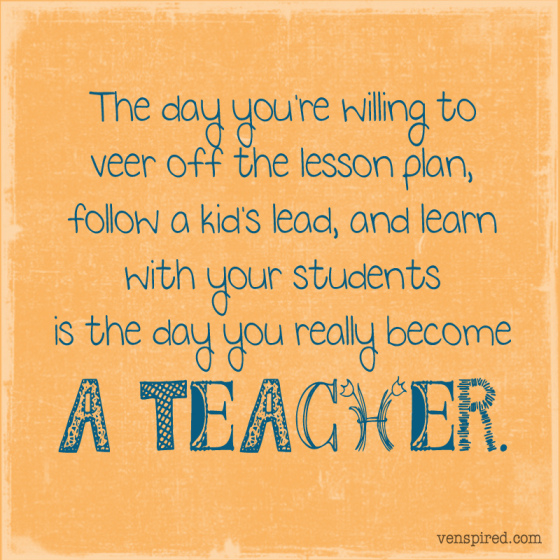
They sit in front of a screen for five hours a day, hundreds of people at desks moving through the programs, step by step. Once a week they meet with a person for fifteen minutes. Occasionally they join a group listening briefly to a speaker. But mostly they interact with a screen, reading and giving answers. They try to keep on task, but sometimes they can’t resist the lure of a computer game. When the wi-fi is down they just sit, waiting. One day, fed up with the eerie quiet, with eye strain, with boredom, they walk out in protest.
Who are these people?
If you guessed workers in a computer based distribution company you would be wrong. Or, if you imagined they are characters in a dystopian novel you may be surprised to discover that this is not a fantasy.
These are kids in a high school in Brooklyn, New York. You might be as shocked as I was when you learn that this computerized approach to schooling is called “personalized learning.” And you might be concerned when you learn that this approach to instruction could be coming to a school near you.
To be fair, it wasn’t supposed to be like this. The developers of the learning system used in this school expected that students would interact with computers for only a few hours per week. Their model school in California used computers to help kids list learning goals and to learn rote skills at their own speed. Students at the model school take a full complement of classes with human teachers. But, somewhere between California and New York, the deeper classes taught by teachers were pushed aside and the Chrome Books took over. More about this here
Just like the students who walked out, I am outraged. Teachers have devoted themselves to personalized learning since Socrates taught on a street corner in Greece in the year 400 BC. It’s not a new idea and it doesn’t require a Chrome Book.
The thing about real personalized learning is that it is multidimensional. It’s more than just a computer program that tracks a student’s learning progress and delivers a “personalized” pace. It’s a teacher tuning into kids to figure out what makes them tick. It’s realizing that sometimes the best teacher is another student. It’s preparing a lesson while being open to ditching that plan when the class starts a valuable conversation.
Real personalized learning means that a teacher is prepared to change a lesson on the fly. One day in a seventh grade science class, I brought in all materials to build electric motors. New to teaching this lesson, I had practiced at home and learned how to assemble the batteries and wire to energize a spinning coil. At school I led my students through the process. When we were done, Emma was the only student with rotating coil. Emma asked permission to help her classmates. Then she proceeded to take her motor apart and put her working components in her classmates’ motors to identify which of their components were not functioning. As Emma worked her way around the room helping her friends, I realized that the lesson had become personalized for Emma, who was ready for an extra challenge, and had also become personalized for the rest of the class who needed one-on-one help to succeed.
My favorite example of real personalized learning happened when I was teaching a combined fifth and sixth grade class. William, my new student, had, so far, tuned out during every lesson. Then, one day, out of the blue, I noticed he was listening intently. It was the biography of Demosthenes that suddenly captured his interest. William was, for the first time in my class, looking, listening and reacting. I paused and looked out the window while I dug into my memory to secretly personalize this lesson, to tell more than I had planned about this ancient Greek orator. I recounted how personalizing this lesson led to William’s academic awakening, in a couple of chapters in my teaching memoir, A Gift of Wonder. (You can read the whole chapter here)
 Twenty-five years in the classroom has led me to the conclusion that real personalized learning is vital. Teachers who are trusted with a high level of professional freedom work to deliver real personalized learning every school day. They communicate with parents. They arrange for tutoring. They notice students who are sick, hungry and tired and find them a nurse, some food and, at times, even cut them some slack. Above all they are aware of the passions, abilities and learning styles of the kids in their classes. They know when a student like Emma is ready to take on a more challenging role and when a student like William needs to be pulled deeper into an inspiring biography to spark his engagement.
Twenty-five years in the classroom has led me to the conclusion that real personalized learning is vital. Teachers who are trusted with a high level of professional freedom work to deliver real personalized learning every school day. They communicate with parents. They arrange for tutoring. They notice students who are sick, hungry and tired and find them a nurse, some food and, at times, even cut them some slack. Above all they are aware of the passions, abilities and learning styles of the kids in their classes. They know when a student like Emma is ready to take on a more challenging role and when a student like William needs to be pulled deeper into an inspiring biography to spark his engagement.
Computers are relatively new in the world of education and it will be decades before we learn the opportunities they can provide and understand the limits of their effectiveness. Meanwhile, our kids are guinea pigs. If the computerized version of “personalized learning” comes to your local school, ask questions. How much time will students interact screens each week? Will they be cutting back on class time with human teachers? Are teachers given freedom to personalize lessons? If you feel uncomfortable with the amount of screen time, join with other parents to demand real personalized education with real teachers.
Written by Kim Allsup and published by Growing Children ~ December 24, 2018.
 ~ The Author ~
~ The Author ~
Kim Allsup’s childhood wonder years inspired her first career as an environmentalist and her second career as a Waldorf teacher. She was the founding staff member of the Buzzard Bay Coalition and a founding parent of the Waldorf School of Cape Cod. A graduate of Brown University and Antioch University (M.Ed), she served as a Waldorf class teacher, on Cape Cod and at the Pine Hill Waldorf School, for 22 years. She is currently a writer, an advisor to teachers and a gardening teacher pioneering the use of school sunhouses. She lives on Cape Cod with her husband and blogs at Growing Children.
She is the author of A Gift of Wonder, A True Story Showing School as it Should Be
